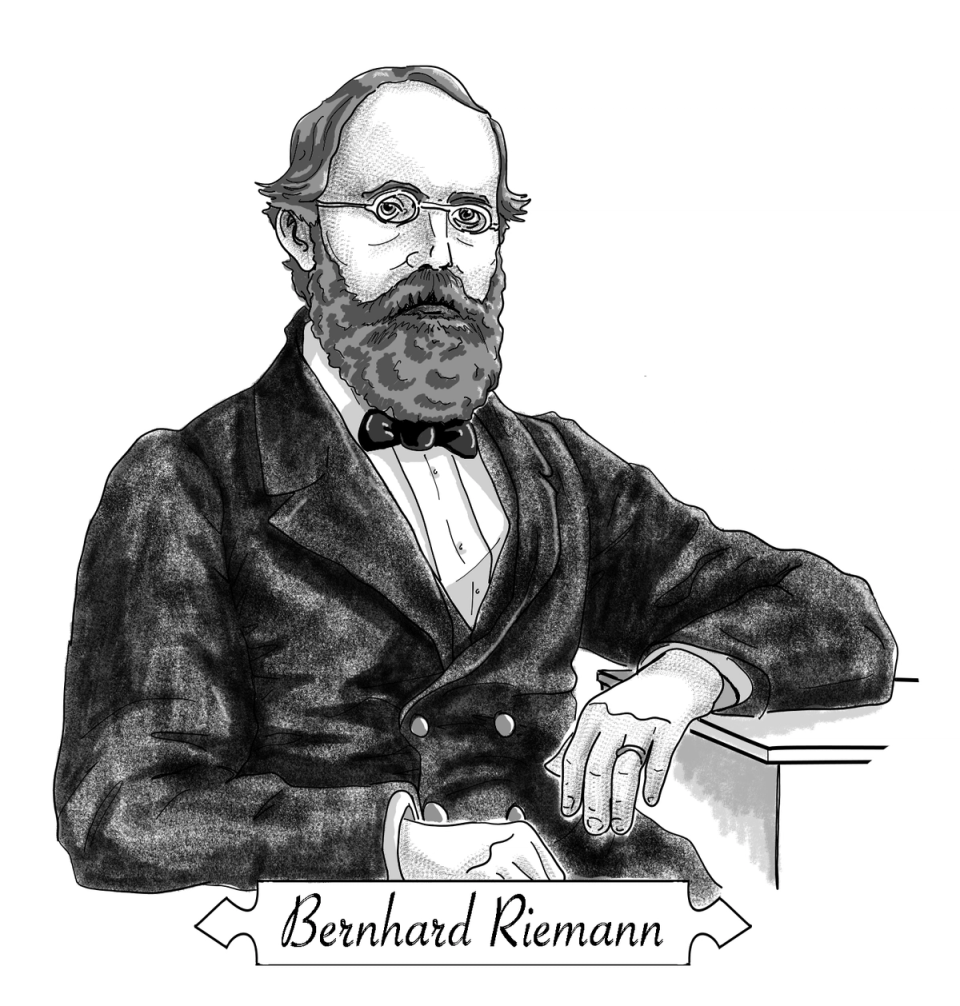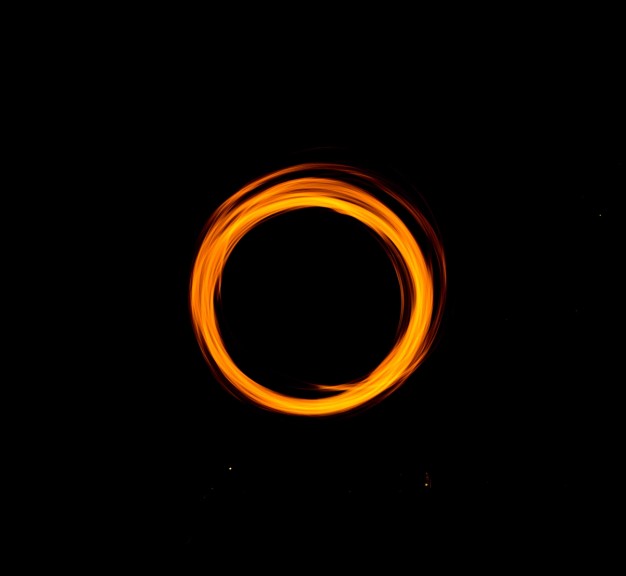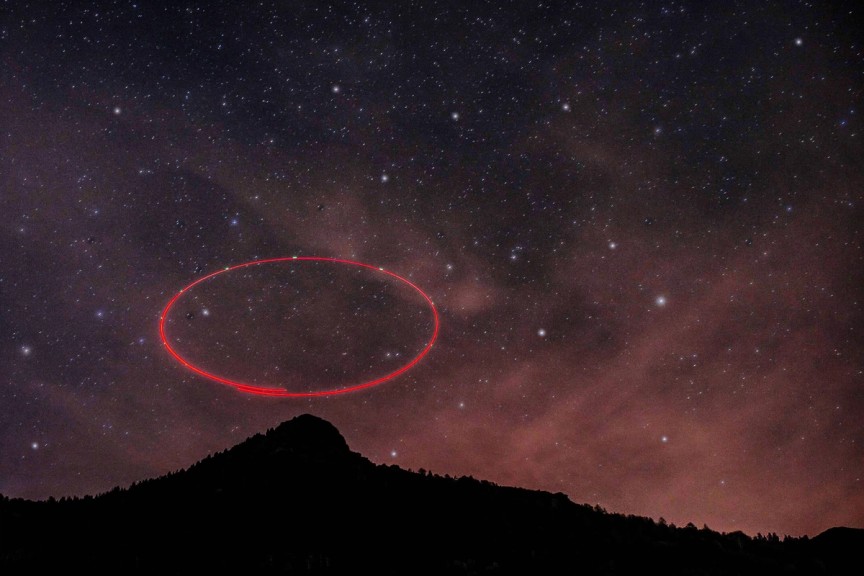“The value of non-Euclidean geometry lies in its ability to liberate us from preconceived ideas in preparation for the time when exploration of physical laws might demand some geometry other than the Euclidean.” Bernhard Riemann

Figure 1. The modest genius
Prime numbers and the zeta function
You have probably heard the expression “opening a can of worms.” It means one small move can cause an avalanche of activity. Extending the zeta function by using analytic continuation certainly “opened a can of math worms.” Let’s get a little background to this story.
Riemann was a quiet and unassuming professor at the University of Gottingen. Even though he came from a humble background and had a shy personality, he was coached by none other than the great Carl Gauss. It was in 1859 when Riemann submitted a paper consisting of only six manuscript pages entitled “On the number of primes less than a given quantity.”
Riemann proposed that to understand the distribution of the prime numbers, we must understand when the zeta function produces a 0 result. You have likely performed many algebra exercises identifying when a function produces a zero result. One way to find a zero result is to factor.
For example, if we have the equation , then we can factor the left side of this equation to get . We can see that or solves this equation because either one produces a 0, and a 0 times anything is 0. Factoring is used to solve the equation. But it is also used to graph the function. The function is 0 when or . Finding the zeros of this function provides two points on its graph, namely and .
We apply the same concept to the complex plane. The zeta function is defined for real numbers greater than 1. When we extend the domain to the entire complex plane by using analytic continuation, there will be some results that produce a 0 output. A 0 output in the complex plane requires both the real number and the imaginary number to be 0. This is because the output of the zeta function when we input complex numbers is a complex number.
Thus, if we graphed the output point in the complex plane, the zero result would be at the origin, or . None of the points we considered earlier produced a zero output. But we would not expect to find a 0 output since we were summing positive real numbers. If we always sum positive real numbers, we never get a 0 result.
However, we do get a 0 result when we extend the domain using analytic continuation. In his paper, Riemann claimed that all of the nontrivial zeros of the zeta function occur when the real number input is . This is referred to as the Riemann Hypothesis. There are known zeros that occur when using negative integers as input. These zeros are considered trivial because they are obvious to those who work with analytic continuation. The focus is identifying zeros that are nontrivial.
Figure 2 is a graph of all the input values in the complex plane when the real number is . Notice this is just a vertical line where the real number is and the imaginary number can be any number. We call this line, where the real number is , the critical line. The gray area is the domain for analytic continuation. Notice to disprove the Riemann Hypothesis, we only need to find one example that produces a zero for the zeta function that is nontrivial and does not have a real number . Math folks with some of the best minds have been attacking this problem since 1859. Since they have not uncovered one counterexample, it does suggest the hypothesis is true. However, suggestion and evidence are far from proof in the math world. This may seem like an interesting theoretical question at best. Why would it matter where the zeros of the zeta function are?
Figure 2. Extending the domain of the zeta function
Brilliance
This is where Riemann’s pure brilliance shines. Riemann also proposed that there is a connection between the outputs of the zeta function that are zeros, where the real number input equals , and the distribution of the prime numbers. You may recall we discussed the Prime Number Theorem. It gave us a formula that estimated the number of prime numbers between 1 and some number . The Prime Number Theorem gives us an estimate, not an exact number, of the expected number of primes.
What the Riemann Hypothesis does is predict how the numbers will deviate from this expected result. This is similar to the concept in statistics when calculating the average and standard deviation for a distribution of numbers that appear random. In other words, the Prime Number Theorem tells us how to calculate the expected value and the zeros of the zeta function tells us how we expect results to deviate from the expected value.
This is a shocking and amazing insight. Because understanding how the prime numbers are distributed is a “holy grail” for math people, tremendous effort and research have been made to prove the Riemann Hypothesis. More than 160 years later, the Riemann Hypothesis remains a mystery, which means we do not know if it is true or false. Math detectives have learned a lot of clues though. Here are just 3 of the results we have learned so far.
First, there are an infinite number of zeros where the real number is . This sheds light as to what is happening on the critical line. Apparently, there is a lot happening since there are an unlimited number of inputs on this critical line that send us to a zero output.
Second, we know in theory there are an infinite number of zeros, but that doesn’t mean we have identified this set. However, we have identified over a billion zeros of the zeta function on the critical line. In other words, we know more than a billion values for so that the input produces a 0 output. I’m not sure if there is any pattern to this list or if somewhere there is a database of over a billion seemingly random numbers that point to 0. I also wonder how these numbers were identified.
Third, all of the nontrivial zeros must occur where the real number is between 0 and 1. That means that even though we have not narrowed the input to the specific value for as the real number input, we know it is between 0 and 1. Thus, we know, for example, that there is not a nontrivial zero for the real number -0.1 or 1.5. To me, it is amazing that we have somehow limited the scope to numbers between 0 and 1.
There are a tremendous number of books and a vast amount of research on this topic. The focus for Lazarus Math is to appreciate the creative process. Quite honestly, I wish I understood the depths of this mystery, but it is way beyond my knowledge. Who wouldn’t want to be part of a 160-year-old math mystery that can change the world? In case you did not know, there is a $1 million dollar prize for anyone who solves this mystery.
Reflecting on the creativity
We’ve traveled through some deep math that has had some interesting twists and turns. Let’s summarize the major creative steps we have taken.
- Inputting complex numbers into the harmonic series to create the zeta function
- Extending the domain for this function by using analytic continuation
- Proposing there is a connection between when this function equals zero and the distribution of prime numbers
Riemann was so far ahead of his time, and we are still trying to catch up to him more than 160 years later. However, this is not Riemann’s only claim to fame. Riemann was also a major contributor to a new type of geometry. Even though it was only a theoretical research project at the time, this new geometry is exactly what Albert Einstein needed for his general theory of relativity. Let’s take a very quick peak at this astonishing new geometry.
Riemann's geometry
Riemann’s geometry, the geometry that Einstein needed, is not an extension of the geometry you studied in high school, which we refer to as Euclidean geometry. No, Riemann’s geometry is an entirely new type of geometry. You may be surprised that there could even be a new type of geometry. After all, the geometry we learned in school, supported by all those theorems we proved, seemed to be all there was. How could there be more than one geometry? What could be more simple and straightforward than circles or triangles?
Even in Lazarus Math, we have implied that there is only one geometry. A simple example is we have repeatedly relied upon the sum of the angles for a triangle to equal 180 degrees. This is a result of Euclidean geometry, and it seems to be a fact that doesn’t change. So, is it true that the sum of all angles of a triangle equals 180 degrees, or is there some exception out there?
Truth in math is always relative, which means it is based on the assumptions that are made. Euclidean geometry is based on 5 assumptions. If these 5 assumptions are true, then Euclidean geometry is rock solid. However, if we change any one of the assumptions, the results of Euclidean geometry can, and likely will, change.
Here are the five assumptions:
- A straight line segment can be drawn joining any two points
- Any straight line segment can be extended indefinitely in a straight line
- Given any straight line segment, a circle can be drawn having the segment as its radius and one endpoint as its center
- All right angles are congruent
- The “parallel postulate”
But aren’t these 5 assumptions truths that are “self-evident?” Certainly, it is obvious that a straight line segment can be drawn between any two points. My country, the United States, began with things believed to be true that are self-evident. It is written in our Declaration of Independence. Don’t we just “know” that they are true because they are obvious or self-evident?
The five assumptions above were considered self-evident when Euclid presented them, and they remained rock solid for centuries. But then, some brave math people dared to consider something different. Specifically, math people experimented with changing the fifth assumption, the parallel postulate. Here is a lengthier explanation of the parallel postulate.
If two lines are drawn which intersect a third in such a way that the sum of the inner angles on one side is less than two right angles, then the two lines must intersect each other on that side if extended far enough. Let’s consider the two angles in Figure 3 below.
Figure 3. Euclid’s parallel postulate
Assume the sum of the two angles is less than 180 degrees. Then the parallel postulate states that if we extend the two segments far enough, then the segments will intersect at some point to form a triangle. This seems reasonable because we know the sum of all 3 angles of a triangle is 180 degrees and, if the first two angles sum to less than 180 degrees, then it seems like we can create a triangle just by extending the lines. You may wonder how this could not be true.
The problem is we do not absolutely know that the sum of the angles for a triangle equals 180 degrees. We only know this if we can assume the parallel postulate. Thus, it would be circular reasoning to use the sum of a triangle equals 180 degrees to prove the parallel postulate is true, and then use the parallel postulate to prove that the sum of the angles of a triangle equals 180 degrees.
This may seem like a technicality. It seems impossible to imagine that these two lines will not intersect, at least in the real world. But math people must be cautious about these seemingly insignificant technicalities. Let’s change our example and assume that the angles in our diagram are each 90 degrees so they sum to 180 degrees. In Figure 4, both angle A and angle B are 90 degrees. Do we think that if we extend our segments far enough, they will intersect?
Figure 4. Will these line segments intersect?
By the same reasoning as before, we say no because now the two angles sum to 180 degrees, so they can’t intersect to form a triangle. If they intersected, then the sum of the angles of the triangle would be more than 180 degrees since the third angle must have some positive degree measure. However, consider this example.
Assume you and a friend are standing at two different points on the equator. You both walk in a straight-line due north such that your paths are perpendicular to the equator. Since you are both walking in two different lines that are both perpendicular to the same line, then the angle your path and your friend's path make with the equator are both 90 degrees. We would also conclude that your path is parallel to your friend's path. The question is: will you ever cross paths with your friend? We know from Euclidean geometry that two parallel lines do not intersect. Thus, the answer from Euclidean geometry is no. However, the correct answer is yes. Your paths will cross at the North Pole.
If in doubt, review the lines of longitude on a globe. They are perpendicular to the equator and form 90 degrees. Yet, if you follow each line of longitude north of the equator, it will pass through the North Pole. Thus, changing this fifth postulate may not appear as unrealistic as you may have thought.
Courage
There is a lot more we could discuss on this topic. But the point is if we change this fifth assumption, then we create new geometries. Math people have considered new geometries for quite a while, but it didn’t gather a lot of momentum until the 19th century when Riemann was one of the pioneers. But change is not easy, even for math people. Many great math people before Riemann considered changing this fifth postulate, but they did so more privately. They did not feel comfortable sharing this brave new idea with others.
One person in particular, Carl Gauss, comes to mind. He was truly one of the great math minds of all time and was Riemann’s mentor. Yet, despite the respect others in the math world had for him, even Gauss did not publish his thoughts on changing the parallel postulate. That is how permanent Euclidean geometry is in our culture. Riemann was one of the brave math people who stood up and published an alternative geometry. It required incredible courage to go against the norm. He was one of the first to build an alternative geometry on solid ground.
A crazy geometry isn’t so crazy
At the time, it only appeared to be a theoretical exercise unrelated to the real world. That is until Einstein began working on his general theory of relativity. Einstein realized that the math of Euclidean geometry was not sufficient for his theory. There was something deeper going on with the math. Einstein’s math advisor suggested considering the geometry presented by Riemann. Amazingly, this geometry worked perfectly.
What appeared to be only theoretical work was actually consistent with observations in the real world. I remember when I first heard this story, I found it fascinating. However, it still seemed theoretical and “over my head.” That changed when I learned of the practical example of how Riemann’s geometry impacts my daily life.
Riemann’s geometry is used each time we use the GPS on our smartphone. An alternative to using Riemann’s geometry is to use traditional Euclidean geometry to identify our location as it does provide a result. However, if GPS was based on Euclidean geometry, the results would be inaccurate to the point where the technology would be useless. Rather, the math from Riemann’s geometry is precisely the math needed to make GPS technology the accurate tool we enjoy today. Chalk up a victory to the math nerds!
Amazing vision
I wish I could draw a picture or give an analogy of how crazy Riemann’s geometry is because it produces some results that are not intuitive. Yet our intuition is not always correct. Scientists have made amazing discoveries on the microscopic and macroscopic levels that defy intuition. They rely on new theoretical math to explain things that cannot be explained by what is considered traditional math. To me, the truly remarkable part of this story is Riemann developed this math independent of the problem Einstein was trying to solve.
Riemann created these seemingly wild ideas about a new geometry, then other math people gave their “stamp of approval” and the work was published. Like so much of theoretical math, it was just sitting there as an idea that math people believed was true based on certain assumptions. It didn’t matter whether this math would be “used in the real world.” What mattered was it was math that followed reason and logic once the assumptions were set.
Riemann’s geometry would have been an incredible feat if Einstein explained the problem to him (assuming they were alive at the same time) and gave Riemann the “specs” for the math he needed in order to do his physics. That would have been an enormous task. But that was not how history happened. Even better, Riemann wasn’t trying to solve a problem in the real world. He likely was curious and let his imagination take over. He wrote this math because it was a new way to think about geometry. A new idea. A new challenge. A new world of possibilities. Because this is what doing math is supposed to be like.
Math and the real world
We tend to think that we observe things in the real world and then create math to explain it. This is how math gets discovered sometimes. But if we only used this recipe to create new math, we would limit the math that gets created.
For example, we think the math used in the microscopic world to be the same math of the world that we can see, just smaller. But this math is not just a scaled-down version of the math we know. It is completely new math.
Likewise, the math that is at play in the macroscopic world of the universe is also different math. As we travel out into the universe, it is not just that the numbers are getting bigger. It is a different geometry.
We can’t limit our math to only explain a world we can see and touch. We need to have an open mind for the unexpected.
Yet, not only did Riemann create math for these new “worlds,” he performed this task decades before anyone had any use for it. It’s not like he wrote this math for a future physicist to apply.
Like Euclid, he started with basic assumptions and definitions, and then explored where those assumptions and definitions would lead. Who would have thought that it would lead to the math hidden in the very large and the very small that we cannot measure? It’s math that is very different from the world that we can measure. More than that, Riemann and others, such as Gauss, proposed that our space is curved. Can you imagine what a crazy idea that would have been in the 19th and even early 20th century?
Not all of Riemann’s geometry is beyond an average person to observe. An example that you may have noticed is the flight path of airplanes. The shortest distance between two points on a globe is not what we would think of as a straight line. Rather, it is a segment of a great circle. Thus, it appears curved. You may have noticed that if you followed the flight path of your plane as it covered a large distance.
The beauty of math
This is only the beginning of how Riemann has impacted our world. Personally, I find it encouraging that all of this was developed by a shy and humble professor in the mid 1800s. One reason I find this story encouraging is I often prefer to communicate in writing rather than speaking. It is wonderful to witness the impact of one person’s written work over time. Also, as I ruminate on these amazing stories from the lives of Riemann, Euler, and other great math heroes, I am in awe of the beautiful and unpredictable light math shines on our lives.
These stories have transformed my life so that I now view things from a different perspective. This different perspective identifies the truly important things that impact our lives and will last. The math we have discussed in Lazarus Math, which is not even the tip of the iceberg, has stood the test of time.
To be honest, I have been humbled through this process. In the past, it has been easy for me to be dismissive of theoretical math as not being important and far removed from the real world. As I read these amazing stories, I realize that nothing is farther from the truth. I think it is part of my impatience that I want to observe results right away. Yet some of the great math ideas need time to breathe, time to grow. This has been a good reminder for me to give other people’s ideas time to breathe, time to grow.
The benefit of math
I have also put on my business hat and thought about math from an investment perspective. A lot of capital has been invested in math research. What do you think is the return on this investment? Because of the time lag, it would be nearly impossible to calculate. I am sure there will be a lot of math that will be beautiful and interesting yet may not yield any real-world benefit of utility, at least not that we can identify. But there are many reasons why I believe math research can be a good investment. Here are three reasons I have identified:
- Math concepts build on each other. A simple example we just used was the associative and distributive properties. First, they were developed for the real numbers. But as we defined the complex numbers, we reused these properties and expanded their scope.
- Because math is application “agnostic,” it is reused across disciplines. The impact and reach of math from finance to music to many other topics is incredible.
- Probably most important is that math is “evergreen.” What was true and useful yesterday is just as true and just as useful today. Think about the impact of Euclid's work and the work of those who built on and clarified Euclidean geometry. That work has stood for centuries. Developing new geometries does not diminish the impact of Euclidean geometry today and in the future.
How math can impact us
There is so much more that could be discussed with regards to how math has impacted our lives, usually in a quiet and unassuming way. Hopefully, I have aroused your curiosity so that you are more aware and appreciative of the math available to us. We can appreciate math not only from a productivity perspective but, more importantly for me, for its pure beauty.
I think the stories about Riemann and the impact of his work are some of the greatest math stories to tell. You may be thinking that these are neat stories but they are stories reserved for the math giants only, the legends we read about. This is not true.
“Discovering” new math is something we all can do. I don’t make that statement based on optimistic hope but rather from experience. In our journey together, I have shared my thoughts “out loud” almost as I’m discovering these stories myself. Lazarus Math began as a few stories that I enjoyed, stories which gave me insights I wanted to share. However, many of the insights I’ve shared came from the process of actually writing about the stories. As I took time to think about them and how to communicate my initial thoughts, new and unexpected thoughts occurred.
In fact, many of the topics in Lazarus Math are topics I didn’t know anything about until I started writing. They were just new ideas I stumbled across as I was sharing a different idea. At some point, I had to stop and limit the scope. These are not topics I learned about in school. I’ve mentioned that in my career as an actuary, I solved finance problems. The stories in Lazarus Math are just things that captured my curiosity, so much so that I devoted time to understanding them more fully.
Also, my math ability is very modest, at best. Lazarus Math is not about ability but about curiosity and imagination. I believe we as humans are born with the ability to recognize patterns and appreciate symmetry. We all have an ability to reason. Sure, some are more gifted than others, but we can all find “success” and enjoyment in math.
What is next
With that said, the next section is my personal story of wrestling with a math idea that I was curious about. Unlike my other work in Lazarus Math that is all more recent, this story goes back to my college days (think a long time ago!). It is the story of when my math came alive, perhaps for the first time.
It’s neat to read stories about the legends like Riemann or Euler who have changed the course of history. You and I may not change the course of history, but we can change ourselves and how we see the world. So I’m sharing my story with you in the next section not because it is important, but to encourage you to find your own story where your math comes alive and you see the world as a different place, if only in your mind.















